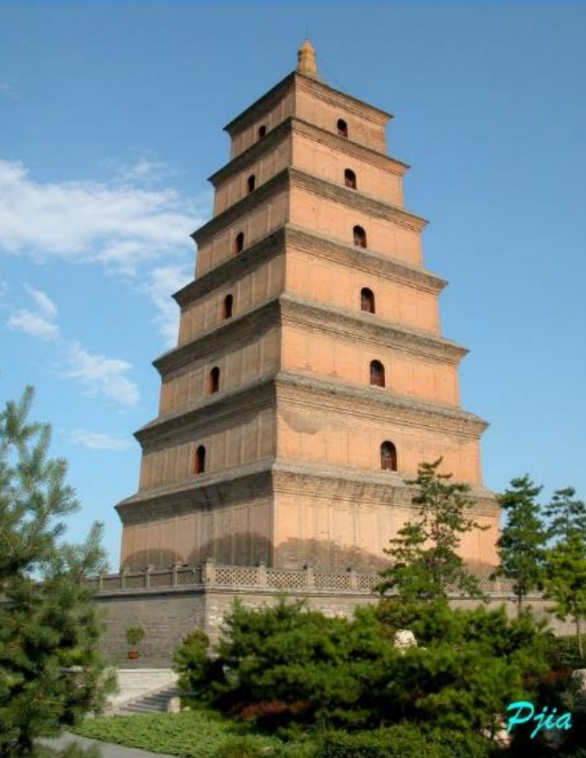Chinese Architecture
1/46
Earn XP
Description and Tags
HOA FINALS REVIEWER 1
Name | Mastery | Learn | Test | Matching | Spaced |
|---|
No study sessions yet.
47 Terms
Yellow River (Huang He)
Yangtze River (Chang Jiang)
Pearl River (Zhu Jiang)
Three great river systems of China
2109 mi long
Length of Huang He
Yangtze River (Chang Jiang)
Third longest river in the world
Mountainous Terrain
Most parts of China has this type of terrain
North China
Part of China dominated by the alluvial plain along the Yellow River
South China
Region drained by the Yangtze river
Southwest China
Classification of China that has the Yunnan-Guizhou and Tibetan Plateau
Tibetan Plateau
Occupies about ¼ of the land area of the People’s Republic of China
Yunnan-Guizhou Plateau
The region is primarily spread over the provinces of Yunnan and Guizhou
Mount Zhumulangma
Chinese for Mount Everest
Extreme cold to almost tropical climate
Northeastly monsoons: winter; and Southwesterly monsoons: summer
China is geographically situated north of the equator
Climatic Influences of Chinese Architecture
Feng Shui and Yin-Yang
Cosmological Concepts in Chinese Architecture
Feng Shui
Evolved based on the belief that forces exist in every locality which acts on all types of buildings, towns and cities for good or ills and sites were chosen or adopted accordingly
Yin-Yang
Opposing qualities bound together as parts of a mutual whole; dynamic equilibrium. Black and white within the circle.
Confucianism, Buddhism, and Taoism
Religious Influences of Chinese Architecture
1. Bilateral symmetry
2. Use of enclosed spaces
3. Directional hierarchies
4. Horizontal emphasis
5. Allusion to various cosmological, mythological, or other symbolism
Architectural Features of Chinese Architecture
Timber, Bricks, and Limestone and Sandstone
Materials Used in Chinese Architecture
Timber
The principal material used in construction in Chinese Architecture
Bricks
These were covered with clay tiles, colored and glazed with symbolic colors (black, red, azure, white and yellow)
Limestone and Sandstone
These materials were fit for use in thresholds, stairs, balusters, engineering works
Even Columns, Odd Bays
Centered Main Door for Symmetry
Symmetrical Construction Style
Use of Large Structural Timbers for Primary Roof Support
Wooden Members Used as Load-Bearing Columns and Lateral Beams
Use of Gable Roofs
Concepts behind the construction of Chinese Architecture
Jian
Unit of Spatial Organization in Chinese Architecture
Longitudinal axis is considered to be the major axis and the horizontal axis as the minor
Chinese Domestic Architecture
The practice of making houses facing South
Tai Liang or Raised Beam Construction
Beams are placed on top of columns erected along the depth of a building, shorter beams are placed on top of the struts on the lower and longer beams
Dougong
A unique structural element of interlocking wooden brackets, one of the most important elements in traditional Chinese architecture
Fudian Roof (Hip Roof)
Used only for important buildings according to a regulation instituted during the Yin Shang dynasty and is characterized by an inward curve and upturned corners
Cuan Jian Roof (Conical Roof)
This roofing does not consist of a main ridge and can be placed on top of almost any compact symmetrical building plan
Ren zi roof (Gable Roof)
Used in less important buildings like the houses of the common people.
Traditional Dwellings
Represents a microcosm of Chinese private life, also influenced by Confucian doctrine
Imperial Palaces
The imperial palaces were built on a grand scale, sparing no expense to display the majesty and dignity of the imperial power of the time.
Outer Courts of Chinese Architecture
Taihedian
Zhonghedian
Wen Huadian
Wuyingdian
Taihedian
The Hall of Supreme Harmony
Zhonghedian
The Hall of Central Harmony
Wen Huadian
The Hall of Literal Glory, served as a study for the crown prince
Wuyingdian
The Hall of Martial Valor, a place for the emperor to receive his ministers
Inner Courts of Chinese Architecture
Qianqinggong and Kunninggong
Qianquinggong
The Palace of Celestial Purity
Kunninggong
The Palace of Terrestrial Union
Temple of Heaven
This was where emperors undertook an annual pilgrimage during the winter solstice to pray to heaven for a good harvest for the following year
Mausoleum of Qin Shihuang
About 1.6 km (1 mile) from the terracotta warriors. It is an artificial hill constructed as part of a 98-square-kilometer necropolis complex.
The Great Wall
The world's longest ancient architectural structure. It has a winding path over rugged mountains around Beijing and the Mongol border, from a beach in east China to a west China desert corridor between tall mountain ranges.
Big Wild Goose Pagoda
One of the most famous Buddhist buildings in China. It was built in the Tang Dynasty to house monks who studied Buddhist scriptures

Big Wild Goose Pagoda
Imperial, Religious, and Commoner
Architectural Types of Chinese Arcitecture
Gong (palace), Ting (pavilion) tai (terrace), and Lou (storeyed buildings)
Structures under Imperial Architecture
Tai (pagoda) and Temples
Structures under Religious Architecture
Traditional Houses
Structures under Commoner Architecture